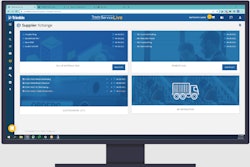We’re excited to provide the readers of Industrial Distribution with the results of our 68th annual Survey of Distributor Operations. The objectives of this report, as always, have been to understand the most critical issues affecting distributors, and to provide data to help drive their educated business decisions. Through these findings, we’ll discuss new and ongoing industry trends, and what trends have fizzled.
Whitepaper: Implementing An E-Commerce Platform In Three Months
In this segment, we focus specifically on:
- Demographics, which establishes a profile of survey respondents based on company size, years in business, sales volume, and product line.
- Challenges, Trends & Economy, which outlines the initiatives distributors are undertaking to address key business and market concerns. This also covers mergers and acquisitions, and how distributors view the impact of the economy.
- The Balance Sheet, which offers insights into revenues and profitability. This addresses areas of investment, concern, and other analysis of factors impacting revenue.
- Best Practices, which sheds light on distributor relationships with suppliers and customers, as well as their global business plans and what challenges are involved.
- Tech Usage & Investments, which covers areas like e-commerce and other big-impact technology solutions for now and the future.
- Value of the Distributor, which addresses the reasons our survey respondents believe customers do business with them, and which service offerings play a significant role in the industry.
- Employment, which identifies hiring and layoff trends, recruitment, and compensation.
Methodology
The results of this study are based on an email survey sent to Industrial Distribution subscribers. Recipients of the survey were offered an incentive to complete the questionnaire. Industrial Distribution’s subscriber base is comprised of 30,000 readers, the majority of whom identify as executive, upper management, sales, or sales management. Results are based on a pool of respondents within this subscriber base.
Because Industrial Distribution transitioned to a new publisher in 2010, no survey was conducted that year. Therefore, results which track comparisons over the past decade will reflect a gap between 2009 and 2011.
Comments on this year’s results? Email ID’s executive editor, Anna Wells, at [email protected].
Tech Usage & Investments
The results of our tech section survey questions seem to grow more salient over time, as the obvious impacts of the digital age become more evident to industrial distributors. And while some pioneers are already on the cutting edge, we oftentimes see a group who is relatively varied in their progress.
Of course, the biggest discussion points center on e-commerce – the focus on which seems to be accelerating. Last year, we asked survey takers whether e-commerce was a priority, and 62 percent said yes. This year, that number has jumped to 69 percent who feel the same. Aligning with this, 65 percent say they are currently generating web-based revenues, leaving a full third who are outside of the online game (Figure 2).
While many companies in this sector have their sights set on e-commerce as a priority, most do not seem to do a significant amount of business here. For three quarters of respondents, the amount of online sales falls within one to ten percent of their overall revenue (Figure 1). Only 11 percent do more than 20 percent of their business online. But just as this online marketplace continues to ramp up, the more online-as-a-percentage-of-sales we’ll likely see. Just last year, those who said their web sales were 20 percent or more of business was just 7.6 percent, highlighting a healthy jump this year.
It’s no surprise then that distributors see “web ordering” as a top digital business tool, along with wireless internet and CRM (customer relationship management) technology. While these may be considered the basics of doing business, about one-third also use technology like ERP systems, demand forecasting, and WMS (warehouse management systems). For those looking to improve their tech capabilities in order to streamline business processes, the top areas for investment in the next two years are web ordering, CRM, WMS, demand forecasting, and SFA (sales force automation).
The technologies that distributors consider to be ‘high impact’ in terms of business results tend to fall along the same lines – with web ordering and CRM at the top. Other software solutions like WMS and ERP (enterprise resource planning) have also been identified as being high impact.
Perhaps part of this shift is simply the way internet usage – especially in purchasing – has continued to become more and more embedded in our personal lives and business processes. Distribution company buyers themselves use the internet for purchasing – 87 percent, in fact. And while the use case becomes more evident, so does distributors’ optimism as to how their online sales will fare. Seventy-five percent say that internet sales will increase next year, and fewer than one percent say they will decrease (Figure 3).
In alignment with this optimism, we’re seeing distributors utilizing their websites more effectively. For example, we asked our audience what they primarily used their websites for, and the responses show an uptick of a few percentage points in almost all areas. Specifically:
- 48 percent say they use their websites to house technical/product information.
- 40 percent to generate orders.
- 36 percent for e-commerce.
- 35 percent each to fi nd new customers and to generate leads.
When it comes to site upkeep, the industry could be described as active, with a segment of companies who simply don’t prioritize this part of the business. For example:
- 46 percent have re-designed their websites within the last year, and 38 percent within the last several years. Sixteen percent say they “can’t recall how long it’s been.”
- The most popular frequency for updating content on their websites was weekly, which 31 percent say they do. Twenty-five
- percent update monthly, and another 25 percent update content every few months.
- Nearly one-third of respondents have a mobile app for their websites.
Recently, Forbes has reported that the B2B e-commerce market is projected to be worth $6.7 trillion by 2020 – and the the frontrunners in this segment is Alibaba. In fact, says Forbes, this growth trend will make the B2B e-commerce market two times bigger than the B2C market ($3.2 trillion) within that timeframe. With this accelerating pace, along with additional competition in outfits like Amazon-Supply (now subsumed into Amazon Business), it’s likely we’ll continue to see an uptick in focus around e-commerce from the industrial space.























